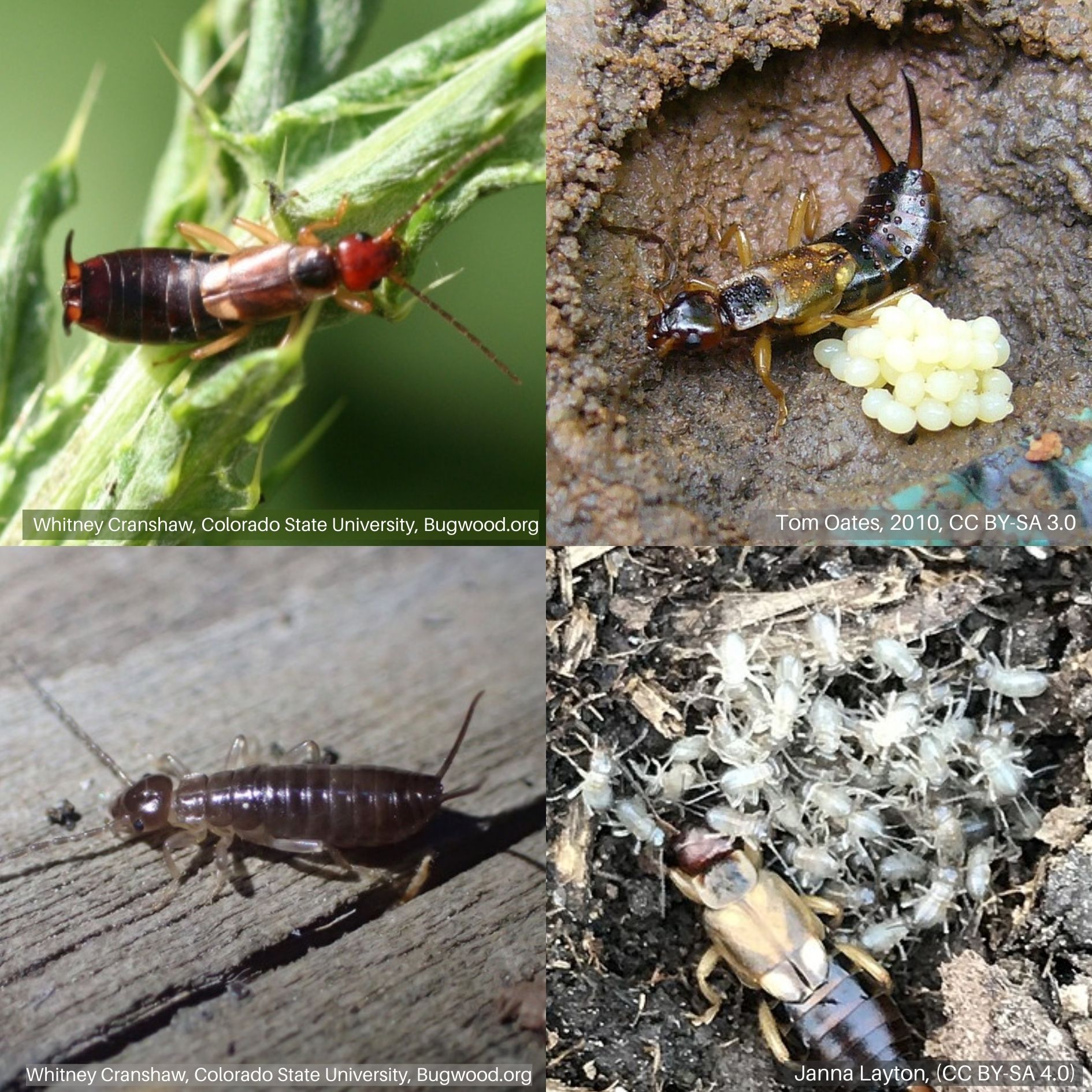European Earwigs
 European Earwig Life Stages
European Earwig Life Stages Earwigs Hiding in Tight Corn Leaves.
Earwigs Hiding in Tight Corn Leaves. Earwig Feeding Damage
Earwig Feeding Damage Earwig Feeding Damage
Earwig Feeding Damage- Brassicas
- Corn
- Cucurbits
- Leafy Greens
- Legumes
OVERVIEW
European earwigs (Forficula auricularia) can be considered a beneficial predator and a detrimental plant pest. When earwig damage is a concern, populations can be controlled with multiple IPM practices.
DESCRIPTION
Adults are slender with a brown body, red-brown head, and a prominent pair of “pinchers” (cerci) on the rear of the body. Nymphs are similar to adults in appearance but smaller and lighter in color.
BIOLOGY
Egg | Nymph | Adult
Adults overwinter in underground in brooding pairs or in above ground aggregations. In the spring, females lay eggs within nests dug out from the soil. Female earwigs are very protective of their young, cleaning mold of the eggs and providing food for young nymphs. Populations tend to build to their highest densities in mid- to late summer, when the nymphs develop into adults. There are 2 or more generations per year.
Earwigs are nocturnal and often spend the the daytime hiding in dark, tight, and moist places. At night, they emerge to find moisture and feed. Earwigs are omnivores, feeding on a diverse diet including plants, fungal spores, small invertebrates, and decaying organic matter. They can be beneficial predators by preying on aphids, caterpillars, and mites, and more. However, they can also act as plant pests by feeding on crop foliage and contaminating plants with frass (droppings).
SYMPTOMS
- Foliage, buds, flowers, fruits with irregular holes and chewed edges.
- Earwigs and frass (fecal matter) within tight, dark, spaces in and around plants.
SCOUTING
- Use a flashlight to scout for earwigs and earwig feeding at night.
- Traps are useful for monitoring earwig populations.
GENERAL MANAGEMENT
Earwigs are more abundant in highly irrigated or mulched areas.
- Place boards, corrugated cardboard, rolled-up or crumpled moistened newspaper, or bait containers (e.g. tuna can, yogurt container) with smelly oils (e.g. clam oil, bacon grease) in crop areas early spring and monitor weekly.
- Only manage when there is unacceptable crop damage.
- Use traps to monitor and reduce numbers.
- Reduce or remove nesting and hiding places.
INSECTICIDES
Since European earwigs can be both beneficial and detrimental to crops, only consider treatment when there is unacceptable crop damage.
Earwig Management
How to Trap Earwigs

